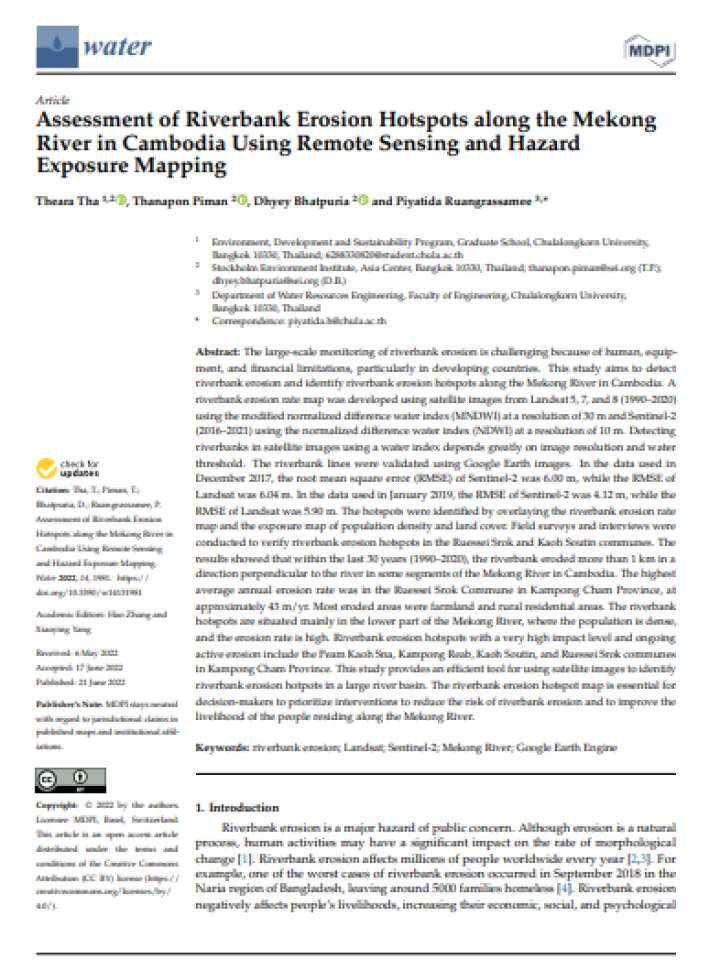Assessment of riverbank erosion hotspots along the Mekong River in Cambodia using remote sensing and hazard exposure mapping
The large-scale monitoring of riverbank erosion is challenging because of human, equipment, and financial limitations, particularly in developing countries. This study aims to detect riverbank erosion and identify riverbank erosion hotspots along the Mekong River in Cambodia. A riverbank erosion rate map was developed using satellite images from Landsat 5, 7, and 8 (1990–2020). Detecting riverbanks in satellite images using a water index depends greatly on image resolution and water threshold. The riverbank lines were validated using Google Earth images.
The results showed that within the last 30 years (1990–2020), the riverbank eroded more than 1 km in a direction perpendicular to the river in some segments of the Mekong River in Cambodia. The highest average annual erosion rate was in the Ruessei Srok Commune in Kampong Cham Province, at approximately 43 m/yr. Most eroded areas were farmland and rural residential areas. The riverbank hotspots are situated mainly in the lower part of the Mekong River, where the population is dense, and the erosion rate is high. Riverbank erosion hotspots with a very high impact level and ongoing active erosion include the Peam Kaoh Sna, Kampong Reab, Kaoh Soutin, and Ruessei Srok communes in Kampong Cham Province. This study provides an efficient tool for using satellite images to identify riverbank erosion hotpots in a large river basin. The riverbank erosion hotspot map is essential for decision-makers to prioritize interventions to reduce the risk of riverbank erosion and to improve the livelihood of the people residing along the Mekong River.
Explore further
